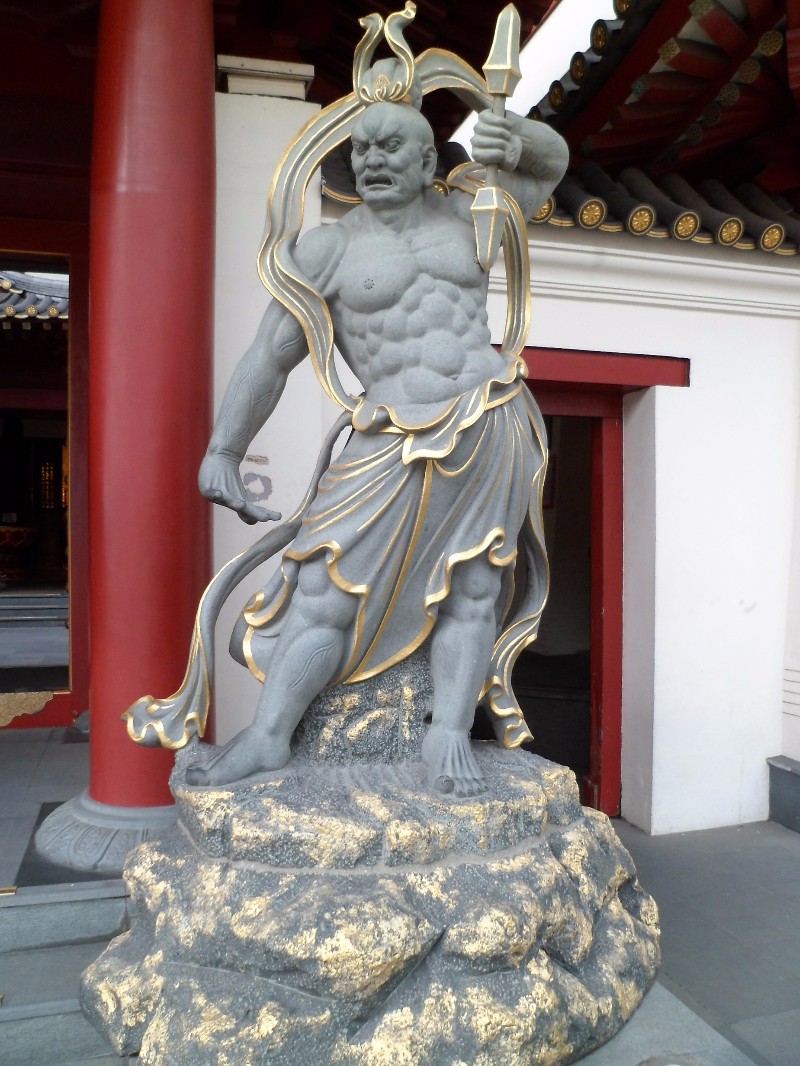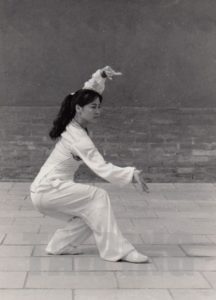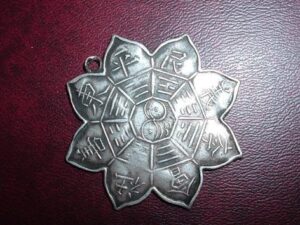In the villages of Hebei province the art of combat has been entrenched into society for hundreds of years. It is here that most of the renowned fighters throughout Chinese martial arts history evolved. Jingang Quan, also known as Ba Da Jingang Quan (八大金刚拳 Eight Great Warrior Guards Boxing), Jingang Luohan Quan (金刚罗汉拳 Guardian Luohan) and sometimes as Shaolin Quan (少林拳Shaolin Boxing) is one of the older boxing methods of Northern China. Jingang Quan is a powerful, practical fighting system.
Feng Keshan, the founder of Chuojiao (戳脚), was one of the leaders of the Bagua Jiao (八卦教), also known as the Tianli Jiao (天理教). He had studied martial arts since young initially under the tutelage of his household who were imperial officers and then with many masters across Shandong, Henan and Hebei province.
When Feng Keshan arrived in Raoyang, there were a number of masters teaching in the area whom became his early disciples. These include Zhou Laoting, Zhao Bafang and Zhang Jingxiu. Zhao Bafang was from the nearby villages and practiced a type of old boxing system known as Jingangquan. Thought to be remnant from the old Bafanquan, Taizuquan and Shaolin systems. As a result the practitioners of Chuojiao in Raoyang historically have emphasized Jingangquan as a foundation and Feng Keshan adopted the methods.
Among the different lineages and villages there are differences, such as the Li family, the Song family and the Zhou families. In the Baoding district which is kilometres away from the Raoyang area, such as Gaoyang area, these Jingangquan are considered a part of a system which is known as mizongquan, but it contains remnants of local boxing like Jingangquan as well as those of the style from cangzhou.
Jingang Quan consists of many skills including a foundation practice (金刚架子 Jingang Jiazi)) which allows the most fundamental techniques to be exercised, a core practice (金刚捶Jingang Chui) which contains all the essential fighting techniques and a set of combat practice (金刚散手Jingang Sanshou) which starts from the practice of individual techniques, duel set and free combatives. There are also a few additional materials created by descendant masters in the generations after Feng Keshan.
Jingang Chui consists of eight Tang (Sequences) with each having its own specific objectives, techniques and training focuses. As an example the fourth sequence applies the signature Wuhua Pao (Canon Fists) adding mobility across the three angles/gates (Sanjiao or Sanmen). The fifth focuses on large techniques requiring continuity (Lianhuan), speed and a powerful flexible waist. It emphasizes hidden or deceptive techniques. Jingang Chui uses large, extended, circular movements to improve overall body mobility in the muscles, tendons, and joints. It is dynamic and directly powerful, with aggressive attacks and intelligent counter tactics.
The additional boxing methods created by second generation Jingangquan practitioners (students of Feng Keshan and Duan Family) include : Sixiang Quan, Babu Quan, Lianhuan Zhang, Xiaocha Quan, Mianfan Quan, Dali Quan and others. As examples, Sixing Quan (4 Shapes Boxing) since it emphasizes the techniques associated with four animals (Green Snake, Fierce Tiger, Brave Eagle and Rabbit). Babu Quan (8 Steps Boxing) emphasizes eight main techniques. Wuzu Jingang is based on the five sets of straight line fist combinations.
Throwing Techniques
Throughout Jingangquan there is an abundance of throwing and takedown methods. Some of its methods are extremely specialized like the Huanglong Sanquan (Yellow Dragon three coils and turns). The key throwing methods like Gouzi (Hooking), Qiezi (Cutting), Biezi (Outside Sweeping) and so on are found in Jingang’s repetoire.
Multiple Opponents
Like many of the central plain martial arts, multiple opponents is a key to their routine practices. Sudden changes of direction, footwork and integrated techniques are all representative of that. Jingangquan has numerous methods like this from the commonly applied Bei Chui (Striking through to the back), to the linked strikes of Riyue Mingzhu (Sun and Moon Bright Pearls).
Grappling/Qin-na
Deceptive since its methods seem long, within its arsenal Jingangquan includes sophisticated grappling methods and locks. From the cross hands that intercept strikes, to the kao (near body) methods which then apply an number of wrist, elbow, shoulder, knee and whole body trapping, locking and grappling.
Kicking Methods
Chuojiao is essentially the King of kicking methods and renowned as such throughout China. Jingangquan also has a large array of kicking methods such as Trapping Kicks, Hooking kicks, Front/Back sweeps, Ambushing Kicks, Stamping Kicks, Jumping Kicks and so on.
Hand and Other Techniques
Jingangquan’s arsenal includes a large array of strikes: uppercuts, circular strikes, straight punches, groin smashes, bridge smashes, hammer strikes, dragon eye fists and so forth. There are also elbows such as upward elbows, turning elbows, pressing elbows and spinning elbows. Palm strikes include chopping palms, pressing palms, pushing palms, covering palms, toppling palms and more. There are even headbutts.
Jingangquan is not just set/routine of Chuojiao but in fact a system of boxing onto its own. Direct, powerful, tactical and effective. Unfortunately with fewer practitioners today and even less that understand Jingangquan’s combatives fully, it is one of those treasures that are slowly fading.




![Read more about the article Yanqing Quan – Yanqing Jiazi [燕青门 – 燕青架子]](http://taipinginstitute.com/wp-content/uploads/2021/08/vfdvfdvfdasv_n-235x300.jpg)